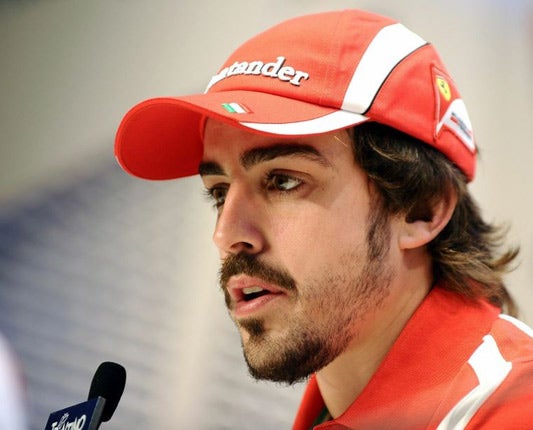Alonso rubbishes rivals' fears over rear-wing changes
Spaniard fully supports initiative to increase overtaking despite concern about driver distraction

The first official practice sessions of the Formula One year here in Albert Park today will do more than just provide a long-awaited indication of the pecking order among the teams. They will also confirm whether the drivers are right to be worried about the new drag-reducing rear wings which have been introduced for 2011 to encourage overtaking.
They work by opening the gap between the upper and lower planes of the wings when drivers operate an onboard cockpit-mounted control. The plan is that only drivers who are following another car during a race may use the system, at points around the track pre-determined by the FIA, the sport's governing body. However, the drivers are concerned that the FIA risks overloading them by allowing the systems to be used without restriction throughout practice and qualifying.
The FIA has said it is open to further discussions about the deployment of the rear-wing drag reduction, and today's sessions will amount to something of a suck-it-and-see trial, after which further decisions may be taken.
"I don't think it's too bad for racing," said local hero Mark Webber. "I'm just a little bit surprised that we have everything at our disposal for qualifying because it doesn't really add to the show. For us to have to get used to the overload, it's just an added bit of tummy-tapping, head-rubbing, multi-tasking which is a fraction unnecessary for qualifying, maybe. But I think for the race we need to see how it's going to work because we're going to use it a lot less in the race. The rear wing is not going to be used anywhere near as much.
"You have to understand that in qualifying we're using it every single time we're at full throttle, so it's pretty busy. I'm on for a challenge. I've done Formula 3000 races round Monaco with a gear stick, so we can drive with one hand, this is not the problem. It's just that I think that some corners, like Eau Rouge at Spa and some of these other places, if you have to loosen your grip or do something different with the steering wheel, it's not the way you would normally do things. I think Ayrton Senna hung on to the steering wheel with both hands, even in those type of corners, so you need to be reacting, getting ready for anything that might happen."
Ferrari's Fernando Alonso took a different view, however. "I don't think there is any particular problem with the new rules so all the things we need to do on the steering wheel, they are part of our job. We are professional drivers and we need to understand between us and our team, to make the most comfortable way of using all the new things. If you have no time to do all the things on the steering wheel, you don't do it, it's not a mandatory thing to do. It will take time and I think that for us, we did a lot of mileage in the winter. I think I can say that for Felipe [Massa] and me, we can get used to the new things and it comes automatically the things that we need to do on the steering wheel, corner after corner, and I don't see any particular problem or anything to discuss in the near future."
Alonso also suggested that the style of F1 will change this year because of the high wear rates of the new Pirelli tyres. "There are many things to learn," he said. "For sure there is a new way of doing the races in terms of strategy, so a new Formula One starts here in Melbourne. We need to be focused on the strategy because it can play a big part in the race result. And maybe, on the other hand, qualifying on Saturday has less value as on Sunday there will be more factors on track.
"The number of laps we can cover on the hard or soft compound tyres is impossible to predict, but after practice we will understand a bit better how the strategy will work on Sunday. It is a new way of approaching the weekend, and hopefully will be more fun for the spectators."
McLaren's Jenson Button added: "It is quite possible that the result of a race will come down to where you are running when you stop for your last set of tyres."
Alonso believes that up to five teams could fight for the title, but that the number could drop to three after the opening races. "I think it's important for each team to be competitive in these early races and then be in that smaller group of two or three teams after three or four races. But at the moment everything is very open."
Join our commenting forum
Join thought-provoking conversations, follow other Independent readers and see their replies
Comments